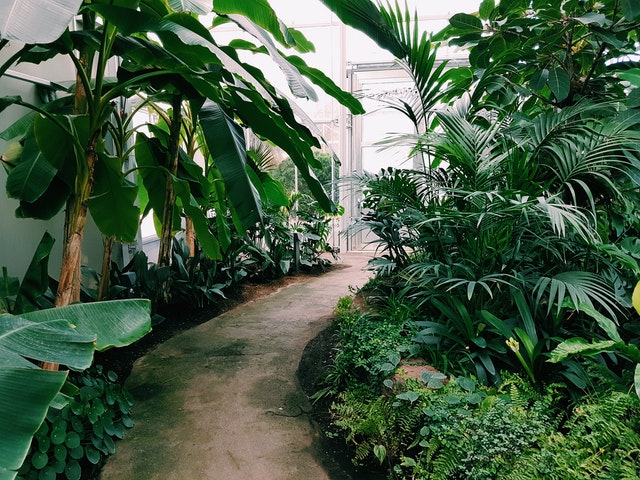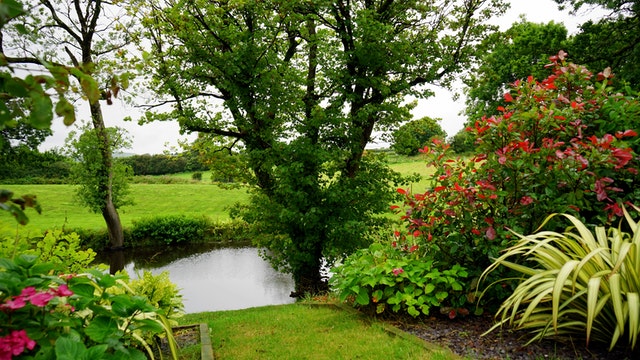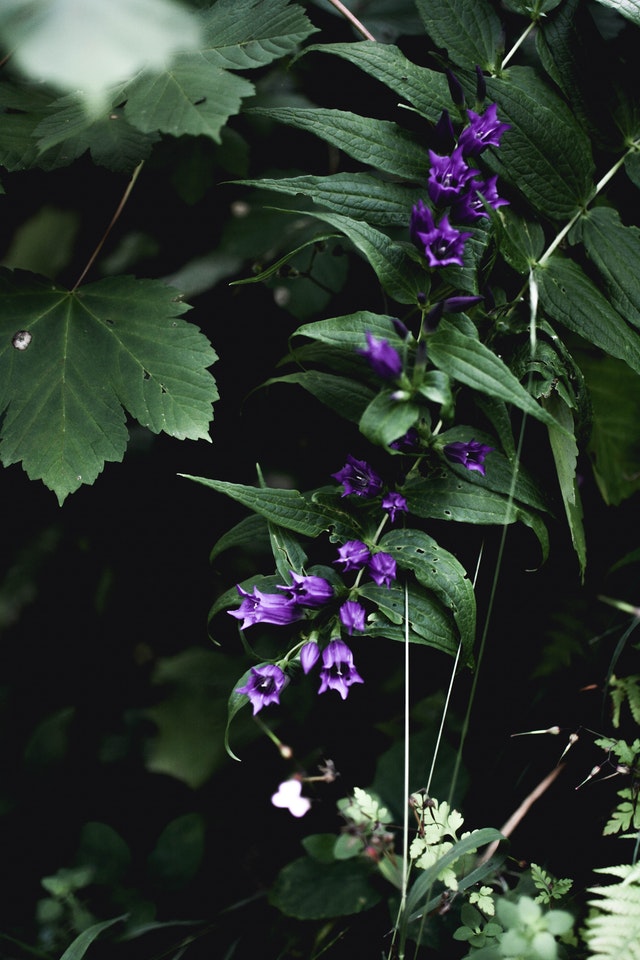And it’s something you can only court: you can’t control it. It just does it or it doesn’t do it, but when it does it, it does it in such a way that you say, “God, I could’ve never planned that. I could’ve never done that.”
Weschler: Looking at this specific instance here, what did you plan?
Irwin: I didn’t plan anything, I found a number of plants that. I really liked that had different kinds of compatibilities, different kinds of overlaps. Some overlapped in terms of scale, some overlapped in terms of color, some overlapped in terms of texture, some overlapped in terms of structure. You find these overlapping capabilities and then you compose them together so that they act and interact and relate to each other.
Weschler: And at the level of composing, what do you say to Jim? “I want that as ground. And I want this above it. And I want two of these.” Or what?
Irvin: No, I just say “Gee, I really like this plant. Let’s out it over here. And that one… God, that one looks great next to it. Let’s put that in there and see what happens “. And then I’ll come back a few weeks later and I’ll say. “Nah, that’s a little too obvious. It’s not unlike how a chemist works; it’s all trial and error. You try this, you try that. You try this, you try that.
Weschler: Talk about that analogy with the activity of a chemist.
Irwin: Yeah. When an artist says, “It feels right,” people think, well, that’s just some kind of out-of- the blue, sort of “intuitive” statement. How can he say that? You know, what’s behind that statement? It’s always a little too vague. But it’s not as vague as they think it is, in the sense that a chemist, too, starts out with a concept and he sets out a kind of hypothesis and he has a strategy and he then does a process of trial and error. He’s got an idea where he thinks it’s going to go, and he tries this and he tries that, and he writes it down. This one reaction, whereas this one nothing happened. Every now and then he might make a discovery along the way, if he was paying attention. So that after he’s done ten thousand of them, you say” Oh my God, he discovered this thing, and this is how he did it”.
What an artist does in a painting is not all that different. You start with the square of the painting is not all that different. You start with the square of the painting. You have a hypothesis, you have a strategy, and you start putting it together in terms of all these choices about what you include, what you exclude. You try this and you try that. You try and try and you finally come to a point where you go beyond. “Okay, I like that. I think that’s good. But what happens if I did this and this and this? “Some days you try all these things and finally, like a reverse- proof in mathematics, you end up confirming that it’s true because you’ve tried all the alternatives.
If you do that for a few hundred year’s- or anyway, excuse me, for twenty years or so- you do that on like five thousand paintings, making these tactile decisions over and over, when you say something feels right, it’s the sum total of those ten thousand or two hundred million decisions you’ve made. So it’s not just floating around somewhere in thin air.
The same thing goes with this garden. Only there’s never been a more complex palette, and believe me, you can drown in this world.
Weschler: I’ve been thinking for some reason as you were talking about the garden as a kind of daydreaming. Or of thinking, reasoning. Letting your mind go. Letting the plants go. Letting the thoughts go.
Irwin: Well, yes and no. I understand what you’re saying, but it’s much more contextually bound that that. There are boundaries, like I was saying about color, and it is more of a trial and error. And yet, at the same time you do definitely float. You’ve got to float when you’re doing it because it’s not a system, it’s a process.
Return to “Ridge Tree Trimming Service“





